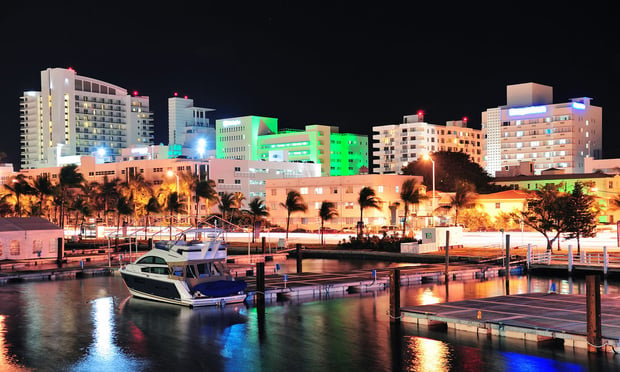AUSTIN, TX-“I’m looking forward to 2014,” remarked Tom Voss, president of The Grand Del Mar, during NAREE’s panel discussion “No Vacancy: The Lows and Highs of the Hotel Market.”
A panel moderated by the San Antonio Express-News’ Emily Spicer, a swath of the hotel sector’s keen minds gathered in the auspicious Hilton of Austin. Along with Voss, Bruce Walker of source Strategies; John Keeling of Valencia Group; and Bill Hoffman of Trigild Inc. rounded out the table.
Walker noted that in Texas the hotel industry, despite the rest of the commercial industry, didn’t have a true drop until the beginning of 2009 when many of the economic factors converged to suppress tourism, business travel and available cash. He explained that with the economy driving much of the negative numbers for hotels, he does not see a future recovery generated by the industry, but rather with what the government can do, particularly with unemployment and possible tax increases, which would sop up necessary cash for consumers.
Hoffman was the most pessimistic of the group, dealing mostly with defaulting hotels as a business and seeing a bleak future for the sector. He indicated that he was seeing a massive volume of defaulted loans that are as yet unknown, but looming. Hoffman estimates that roughly 40% of hotels may be in already or going into default, as the majority of new product was tied up in CMBS, which will come due in 2011, 2012 and 2013.
“An improving economy is not going to help,” Hoffman explained. The CMBS defaults is creating a Rube Goldbergian series of events to transpire for hotels. High end hotels are defaulting in much greater numbers than previous downturns, new construction will be halted indefinitely and numerous hotels are so deep in the hole that they are handing over the keys, closing shop and essentially boarding up the windows, admitting that there is no profit to be made for the next 10 years or so.
Contrary to public opinion, Hoffman noted, there really aren’t alternative uses for hotels. Senior housing or office space are close but no cigar. “There are too many bathrooms,” he explained. And with a closure, the value of the hotel will plummet roughly 80%.
This also causes problems with banks, which become skittish to lend into a sector which is already suffering terribly under the weight of its previous loans. This makes it hard to get money for building a new hotel or just as importantly, purchasing a struggling hotel.
Financing is loosening for existing properties as competition for the limited better products that come onto the market keep cap rates hovering around 8%, explained Keeling.
Every so often, “our Uncle (Sam) in Washington will sometimes ride to the rescue,” with a HUD loan for Motel 6 level property, said Keeling, but that is about the extent of the lending for hotels.
Keeling was a bit more optimistic, joking about Hoffman, “Have you ever met an optimistic policeman?” Despite the meager 0.4% increase in rooms in 2010, it bodes well for existing properties. He noted that transient leisure and transient corporate travel are up, business is still down, but they are modest indicators of positive movement. Keeling feels that 2010 will show a price transition remaining flat or slightly negative, but not continuing to plummet, while 2011 will push prices up about 3.5% and 2012 will be the official year of the comeback.
The stigma sent by the Federal government following the public outrage over the AIG junket to the St. Regis Hotel put the kibosh on the word “luxury,” causing a precipitous drop in high-end hotel revenue, which was already suffering under the weight of the condo market collapse. Many of the luxury brands were depending on those condos to stay viable, Keeling explained, and without them, those higher end shingles began to fold.
Voss said that in marketing the Grand Del Mar, his company consciously removed the words “luxury” and “resort” from its marketing and repositioned the campaign to revolve around consumers “[going] their own way.” The Grand Del Mar has fared well, as there is not a high luxury market in San Diego, however Keeling does not believe that there will be any luxury hotel development in the US again for the next 20 years, characterizing it as “heroic” if it took place. For the time being, four star hotels are getting “five star refugees,” Keeling explained.
In terms of the distressed hotels on the market, they will eventually be purchased by an opportunistic investor, similar to what Barry Sternlicht did during the last cycle, Hoffman notes. But right now, no one is investing, not even Starwood. “If Starwood doesn’t think it’s a good idea to invest in hotels, it’s a pretty good indicator” of how bad the sector is, said Hoffman.
“I don’t think a lo tof people in the industry want to look behind the curtain,” Hoffman intoned. “If you’re giving away rooms at half-price, your vacancy rate looks great. But you RevPAR is in the tank.”
Want to continue reading?
Become a Free ALM Digital Reader.
Once you are an ALM Digital Member, you’ll receive:
- Breaking commercial real estate news and analysis, on-site and via our newsletters and custom alerts
- Educational webcasts, white papers, and ebooks from industry thought leaders
- Critical coverage of the property casualty insurance and financial advisory markets on our other ALM sites, PropertyCasualty360 and ThinkAdvisor
Already have an account? Sign In Now
*May exclude premium content© 2024 ALM Global, LLC, All Rights Reserved. Request academic re-use from www.copyright.com. All other uses, submit a request to [email protected]. For more information visit Asset & Logo Licensing.







